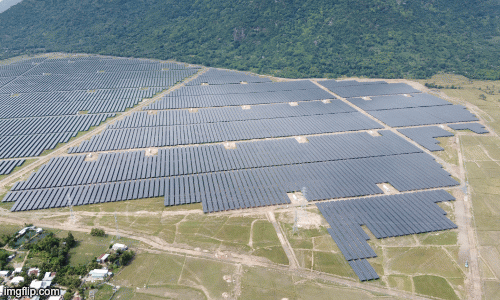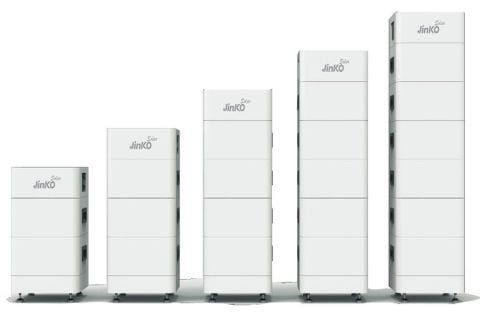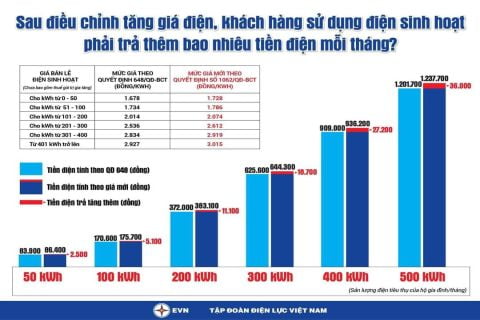-
Your shopping cart is empty!
PERFORMANCE RATIO
05/06/2021,
Array
PERFORMANCE RATIO
Quality factors for solar power plants
I. MAIN CONTENT
Performance Ratio(PR) is one of the most important variables to evaluate the efficiency of a solar power plant. Specifically, PR is the ratio between the actual power output and the theoretical calculated figures. It is largely independent of the direction and solar radiation reaching the solar power plant. For this reason, efficiency ratios can be used to compare grid-supplying solar plants at different locations around the world. This article will explain what the performance ratio is and its function. You will also discover how to calculate the efficiency ratio for your solar plant and the factors that affect it.

Performance Ratio(PR)
1. What is the performance ratio?
Performance Ratio (PR) is a measure of the quality of a solar power plant regardless of the installation location, so it is often seen as a quality factor. The Performance Ratio (PR) is calculated as a percentage and describes the relationship between the actual and theoretical energy output of a solar power plant. Therefore, it represents the percentage of energy actually available for export to the grid after deducting the energy loss (eg due to heat loss and transmission loss..) and the part of the power consumed. The closer the PR value determined for a solar power plant is to 100%, the more efficient the corresponding PV plant is. In real life it is not possible to achieve a value of 100%, as inevitable losses always arise when operating a PV plant (e.g. heat loss due to heating of PV modules). However, high efficiency PV plants can achieve efficiency rates of up to 80%.
2. Function of performance ratio
Performance ratios tell investors how efficient and reliable a solar power plant is. Based on the measured efficiency ratio, you can compare the energy output of your solar plant with the output of other solar plants or monitor the health of your solar plant over a long period of time. Determining performance ratios at regular and fixed intervals does not provide absolute comparisons. Instead, it gives the operator the option of testing efficiency and output: assuming the solar plant is operating optimally when it is commissioned, and therefore the initial value for the efficiency ratio is 100%, then taking subsequent PR values over time allows deviations to be identified from which appropriate inspection and adjustment can be made. Therefore, thanks to the false values in the PR Test, you can detect possible failures in the solar plant early.
3. How is the performance ratio calculated?
Different variables are needed to be able to calculate the performance ratio of your solar plant. First, here are the solar irradiance values for the location of the solar power plant. You can determine these values using an incident solar meter at the factory. On the other hand, you need the module area of the solar plant and the relative efficiency of the PV modules. The module efficiency of the data sheet for the PV module can be obtained in the data sheet.
Calculation requirements
If a solar power plant meter is used to measure direct incident solar radiation, the orientation of the PV module and the meter must be the same before you can calculate the correct PR value. You therefore ensure that the PV modules and measuring equipment are exposed to the same amount of incident solar radiation and to the same temperature.
Analysis period
The optimal analysis period to calculate the active rate is 1 year. However, you can also choose a shorter time period, for example if you want to compare your PV plant directly with other PV plants. With that said, it is recommended that you choose a minimum analysis period of 1 month to ensure that ambient conditions such as low solar altitude, low temperatures, and shadows on the PV module or instrumentation do not affect the environment. strongly influence the calculation.
3.1 Relative manual calculation
If you want to calculate the performance ratio yourself, you can use the following simple formula: Formula for manual calculation of performance ratio:
The actual power output of the plant in kWh can be read at the end of the year from the grid output meter. The factory's calculated nominal annual output includes the following:
Formula for nominal factory output
Annual solar radiation incidence angle at PV plant generator surface x relative efficiency of PV plant modules Solar irradiance value obtained by instrumentation measured at tissue level- cook, ideally throughout the year.
Before this radiation value can be determined, the average value of the radiation values measured by the measuring equipment must be determined. The determined irradiance value per m2 is then extrapolated to the entire PV plant module surface (= generator area). You can get the efficiency of the module in the data sheet for the PV plant.
3.2 Calculation based on parameters measured by specialized measuring equipment
EPC Solar is a professional performance ratio (PR Test) service provider, providing independent and accurate performance evaluation results. The assessment and inspection are based on international standards (IEC) and Vietnamese standards (TCVN). Refer to EPC Solar's PR Test implementation process
4. What factors affect the performance ratio?
The performance ratio is a purely definition based variable which, under the influence of certain factors, may even exceed a value of 100%. This is because the performance characteristics of the PV modules used to calculate the efficiency ratio have been determined under standard test conditions (1000 W/m2 solar radiation and module temperature- boil 25°C).
Therefore, deviation conditions in actual operating conditions will affect the performance ratio.
The following factors can affect the PR value:
* Environmental factors
- Temperature of PV module
- Solar irradiation and power dissipation
- The measuring device is in the shade or is dusty
- The PV module is in the shade or covered with dirt.
* Other factors
- Recording time
- Conductive loss
- Efficiency factor of PV modules
- Efficiency factor of the inverter
- Differences in the solar cell technology of the meter and that of the PV modules
- Orientation of the meter
4.1 Environmental factors
PV module temperature
The efficiency and performance of solar cells depend on the temperature of the PV module. At lower temperatures, PV modules are particularly efficient. For example, the PV module is cold in winter. If under these conditions full solar radiation fails on a cold PV module, the module is very efficient. This can generate high PR value in the short term. After a certain time, the PV module heats up and the efficiency decreases again.
Solar radiation and power dissipation
In the morning, evening, and especially in winter, when the sun is low in the sky, the value of the incident solar radiation is close to the power dissipation (= difference between input and output power ) closer than at other times of the day and of the year. For this reason, PR values are lower than normal at these times.
Measure sensor in shade or dirt
Depending on the installation location, plants and buildings can cast a shadow on your solar plant's metering device and thus the meter may be temporarily or even permanently in the shade. Especially when the sun is low, the PV plant components themselves can cast shadows on the measuring device. Placement partially or completely in the shadow of the measuring device can result in PR values above 100%. In addition, environmental factors such as snow, dust or pollen can lead to fouling of your PV plant and thus also a PR value above 100%.
Shade or dirt of PV modules
Factories and buildings can cast shadows on your PV modules and thus the metering equipment can be temporarily or even permanently in the shade. Also soiled by dust, pollen, snow, etc. may lead to shading of PV modules. This shielding results in the PV module absorbing less solar radiation than usual. The efficiency of PV modules and accordingly the PV plant's PR value also decreases.
4.2 Other factors
Measurement time
If the measurement period is too short (i.e. less than 1 month), there will not be enough measurements to reliably calculate the performance ratio. Low sun altitude, low and high temperatures, and shade strongly influence the calculation results in this case, as these values may not be completely recorded.
Conductive loss
With power transmission from the inverter to the grid operator's output meter, conduction losses can occur depending on the type and material of the power cable used. PR values may be reduced due to conduction losses.
Performance of PV . modules
The performance of PV modules has a decisive influence on the efficiency ratio of your PV plant. The higher the efficiency of the PV modules, the higher the PR value (with corresponding environmental conditions such as higher solar irradiance at the site, etc.).
Efficiency of the inverter
If the inverter used in your PV plant is highly efficient, this can result in a high PR value. SMA, TMEIC, etc. inverters with 90% efficiency allow PR values above 80%.
Using different solar cell technologies in PV modules and metering equipment
There are different types of solar cells for PV modules. The following three types of solar cells are used most often: monocrystalline silicon cells, polycrystalline silicon cells and thin layer cells. If the metering equipment installed in the PV plant uses a different solar cell technology than your PV module, this may lead to deviations in the efficiency ratio.
Depletion of solar cells
The age-related deterioration of solar cells results in lower PR values over time. Monocrystalline and polycrystalline solar cells have losses of up to 20% after 20 years.
Contact EPC Solar to learn how our performance ratios measure the current financial and operational performance of your system.
Hotline: 079 664 8899 Fanpage: EPCSOLARVN





